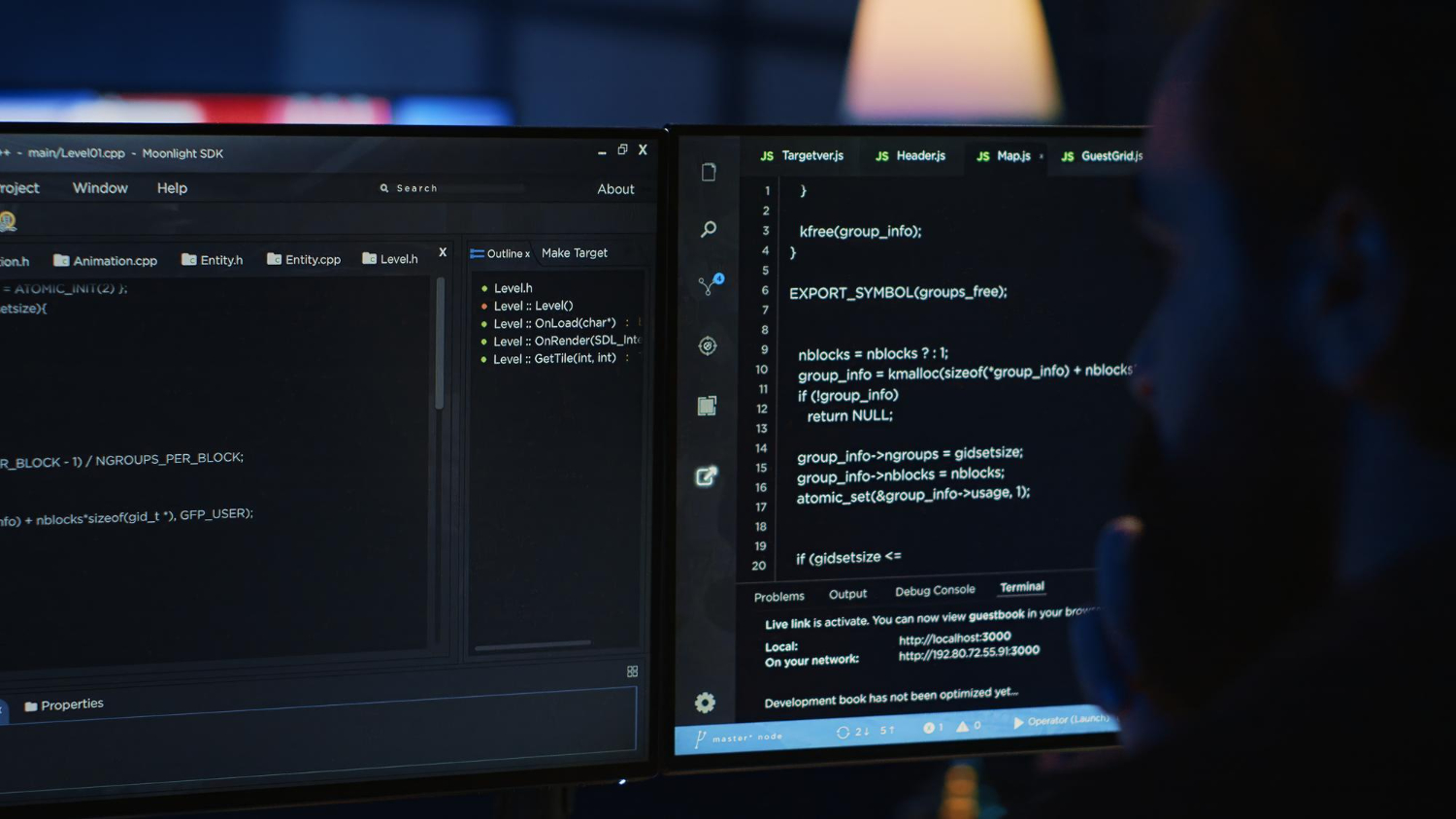
Digital Transformation in Application Development
Digital transformation can be described as the initial steps of the digital journey—an inevitable destination for all public and private organizations in the 21st century.
A lot has been written about digital transformation and the digital journey concerning business processes linked to production, administration, and market relationships. However, it is equally important to consider the impact on internal application development processes, which are also part of the digital journey.
This article is directed towards Information Technology (IT) personnel in general, and particularly the growing community of Application Development Professionals, providing simple explanations, practical suggestions, and concrete steps to move forward using best practices in this cutting-edge journey.
Start the Digital Transformation by Migrating to a Microservices Architecture
Digital transformation in application development within IT involves adopting new technologies and approaches to boost efficiency, agility, and innovation. The most significant components of this transformation include:
- Cloud Computing: The adoption of cloud services allows organizations to scale applications, reduce costs, and increase flexibility. This includes utilizing different types of cloud platforms, especially the major hyperscalers like AWS (Amazon Web Services), Microsoft Azure, and GCP (Google Cloud Platform), as well as other providers like IBM and Oracle.
- DevOps: DevOps practices promote collaboration between development and operations teams, which accelerates the software development lifecycle, improves product quality, and reduces time-to-market.
- Agile Methodologies: Agile approaches, such as Scrum and Kanban, facilitate faster and continuous software delivery, enabling a more effective response to changing business needs.
- Artificial Intelligence (AI): Integrating AI and Machine Learning (ML), as well as Generative AI and Deep Learning (DL) into applications, can enhance personalization, automate processes, reduce costs, generate objects, and provide predictive analysis.
- Microservices and Containers: Microservices architecture and the use of containers such as Docker, alongside orchestration tools like Kubernetes, offer improved modularity, scalability, flexibility, and ease of deployment.
- Process Automation: Automating development and operational processes minimizes human errors, improves efficiency, and frees up skilled personnel for tasks that add greater value.
- Information Security: Incorporating security practices (DevSecOps) from the outset of development (“by design”) is crucial for protecting data and ensuring the integrity of applications.
- User Experience (UX): Improving user experience is key. This can be achieved through applications that are intuitive, accessible, and meet customer needs.
- Data Analytics: The ability to collect, transform, analyze, and richly represent large data volumes is essential for informed decision-making and optimizing application performance.
- Internet of Things (IoT): IoT integration allows devices to connect and communicate, creating new opportunities for innovative applications and services.
All or some of these components can work together to enable an effective digital transformation in application development, allowing organizations to quickly respond to market demands and improve customer satisfaction.
This article focuses on using DevOps practices with agile methodologies, adopting microservices architectures that use containers and container orchestration systems such as Kubernetes.
Microservices, Containers, and Kubernetes
Until recently, the most common method for creating applications was through a monolithic architecture—where the entire application is a single autonomous unit. This approach worked well until applications became increasingly complex. Modifying even a small part of the code in a monolithic system required recompiling the entire system, running all tests, and deploying a new version of the application.
To simplify this, microservices were introduced—a strategy that divides software systems into smaller, independently developed, and deployed units. Microservices architecture has been promoted through DevOps, with the goal of delivering frequent updates, such as new features, bug fixes, and security improvements. It has also led companies to rewrite older applications using modern programming languages and updated technological components.
Microservices represent a concept where an application is created as a collection of independent services. These services are loosely coupled, can be independently deployed, and are easy to maintain. While a monolithic application is an indivisible unit, microservices break that unit into independent pieces that together create a cohesive whole. This approach is foundational for continuous delivery, enabling teams to adapt quickly to user needs.
Each microservice is a web service responsible for a specific part of the logic, and the combination of several microservices builds the application. They interact through APIs like REST but are unaware of each other’s internal operations. This interaction results in a flexible and scalable architecture, allowing for agile development and frequent, quick releases.
To implement microservices, containers like Docker are used. Containers bundle an application with all its dependencies, enabling consistent and easy deployment. Since containers do not carry the overhead of their own operating system, they are smaller and lighter compared to traditional virtual machines. This makes them ideal for smaller, autonomous services like those in a microservices architecture.
As services and containers proliferate, managing large groups of containers becomes crucial. Docker is popular for containerization, helping developers build, deploy, and run containers. However, managing containers at scale requires Kubernetes, which handles large-scale container orchestration. Docker and Kubernetes work together to package services into easily deployable containers, and Kubernetes ensures effective management of these containers.
Migrating to Kubernetes
Migrating to a microservices architecture based on containers managed by Kubernetes is a critical step in digital transformation. It affects the complete lifecycle of application systems, including development, deployment, and corrective and evolutionary maintenance.
Why Migrate to Kubernetes?
- Resource Optimization: Kubernetes optimizes resource usage. For instance, it allows for High Availability (HA) by replicating only a specific part of the application logic—just a microservice—enabling flexible scalability. This means better utilization of server farm resources.
- Technological Flexibility: Using a microservices architecture managed by Kubernetes provides greater technological flexibility, giving development teams the freedom to select the tools that best fit each case. This enhances productivity and satisfaction.
- Autonomous High Availability Management: Kubernetes allows developers to manage processes like HA autonomously, simplifying system administration.
- Integration with CI/CD Tools: Kubernetes integrates well with Continuous Integration/Continuous Development (CI/CD) tools. Traditional processes involving moving applications between Development, Test, and Production environments often face bottlenecks. Kubernetes automates this movement, making it simple, quick, and secure. This empowers teams to experiment with new features and revert them if necessary, expediting code updates and reducing time to market.
- Minimal Downtime: Applications in Kubernetes experience minimal downtime, supported by automatic testing that ensures precision. During upgrades, Kubernetes installs the new version alongside the old one, conducting automatic tests to maintain version integrity.
- Agility in Development Lifecycle: Kubernetes gives organizations greater agility in the lifecycle of their applications, enabling frequent, secure, and rapid releases. Development teams can be small and independent, adopting agile practices that allow quick iteration and reduce development cycles.
- Gradual and Progressive Adoption: Kubernetes allows for gradual adoption. Organizations can start small, in their own data center, and grow progressively, eventually moving to cloud environments like AWS, Google Cloud, Azure, or other providers like IBM and Oracle. This flexibility ensures that the majority of the initial work is reusable across environments, with only minor adjustments needed.
Why Might You Need Help Migrating to Kubernetes?
A gradual approach is recommended for migrating to a Kubernetes-based microservices architecture, as it demands specialized professional services throughout the entire application lifecycle, from initial migration to ongoing maintenance and support. Organizations may either rely on internal resources or seek specialized consulting services, such as those offered by Quanam, for several reasons:
- Technical Complexity: Although migration does not require rewriting applications, numerous technical details related to configuration and deployment need attention.
- Resource Limitations: Many organizations do not have all the specialized technical staff needed to execute such migrations independently. Attempting the migration without external expertise may be costlier and likely yield lower-quality results compared to using experienced consultants who specialize in such projects.
Quanam has a qualified professional team experienced in diverse scenarios, applying best industry practices to quickly and efficiently initiate and execute Kubernetes migration projects for clients.
José C. Nordmann
SME in Digital Transformation
Member of the Global Council for a Safer Planet
Member of ACFE (Association of Certified Fraud Examiners)
Member of the i2 Group Worldwide Advisory Board
